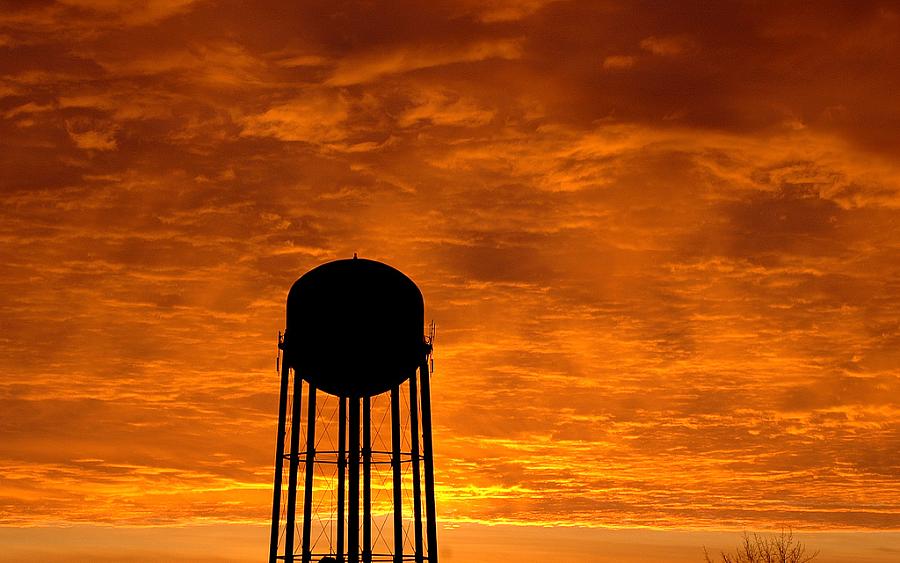Hidden Wells, Dirty Water: The Backstory of an Environmental Health Reporting Project

It began with a late-in-the day and rather low-key press release from the state Department of Health in Olympia, Washington on the day after New Year’s Day, Jan. 2, 2008. Water samples from a well used by an elementary school in rural Outlook, Washington had tested above the federal safety limit for nitrates. The school kids were still on Christmas break but bottled water would be available when they returned, officials said.
As the health reporter at the Yakima Herald-Republic, a daily paper covering the heavily agricultural Yakima Valley in Eastern Washington, I wrote up a daily news story. I really almost forgot about doing anything more -- there had been no reports of sickness among the kids. And nitrates didn’t seem as dangerous as say, pesticides, or fecal coliform bacteria.
But something kept niggling at me. I wondered how long the school’s well had exceeded safety limits? I also began to wonder how many residents of this rural area populated by dairies and heavily fertilized farms relied on well water?
That was the ordinary start to what became “Hidden Wells, Dirty Water,” a series published in Oct. 2008 with the help of a USC Annenberg National Health Journalism Fellowship earlier that year.
Nitrates, I learned, are not benign. While the red blood cells of children and adults exposed to nitrate recover rapidly, the cells may not recover in infants, who can develop a serious health condition known as blue baby syndrome. The lack of oxygen causes the skin to turn a brownish-blue color.
Some studies have found an increased risk of spontaneous abortion or certain birth defects in pregnant women who drank water high in nitrate. The elderly and people with compromised immune systems also may be negatively affected by nitrate.
The Environmental Protection Agency finally acknowledged this month that its own safety standard for nitrates has been exceeded in the Yakima Valley. The news came in an EPA report based on well testing initiated after the series. The agency concluded, on the fourth anniversary of the series, that large, industrial scale dairies are likely the major source of groundwater contamination in the Lower Yakima Valley, a region that includes Outlook and is home to Latino farm workers who harvest tree fruit – the valley’s signature crop.
Reporting the series was a long slog through documents disclosed under state public records law. What the memos, reports, court testimony and emails over a period of years from regulatory agencies added up to was a colossal failure of these agencies to do their job despite abundant evidence that at least 20 percent of the wells in the Lower Valley were contaminated.
Interestingly, as my reporting deepened, sources from within those agencies reached out to me to offer guidance on where to look next. Middle managers stymied in their ability to take action became my friends.
Complicit in this lack of action was the dairy industry, which lobbied the state legislature successfully to reduce the number of field inspectors charged with ensuring that manure lagoons were not leaking into groundwater.
The positions of the dairies and their opponents, who make no secret of their desire to get rid of large, industrial scale livestock operations, have hardened despite attempts at cooperation. Already, the consumer groups have threatened a lawsuit based on the EPA’s findings. One eye-opening EPA finding: Four dairies in a cluster in the Lower Yakima Valley leak from 3.3 million to 39.6 million gallons of manure per year into the soil, the most likely culprit in down gradient well water contamination.
The series won numerous national and state awards. More importantly, it resulted in the EPA’s initial investigation and, last month, an acknowledgment of the problem from the EPA and the Washington State Dept. of Ecology, along with other regulatory actions:
- Yakima County paid for and installed nitrate filtration systems on wells in the Lower Yakima Valley.
- The state Dept. of Ecology approved a Groundwater Management Area with a goal of reducing nitrate pollution.
- The EPA declared the valley an Environmental Justice Community.
- The EPA is working on "binding agreements" with dairies to try to stem further contamination.
Related Content:
An investigation into the water wells of rural Washington
Employing Human Testing to Tell Stories about Environmental Health Risk
Interns for the Win: Kaitlyn Ridel and Her Big USA Today Lead Poisoning Story

